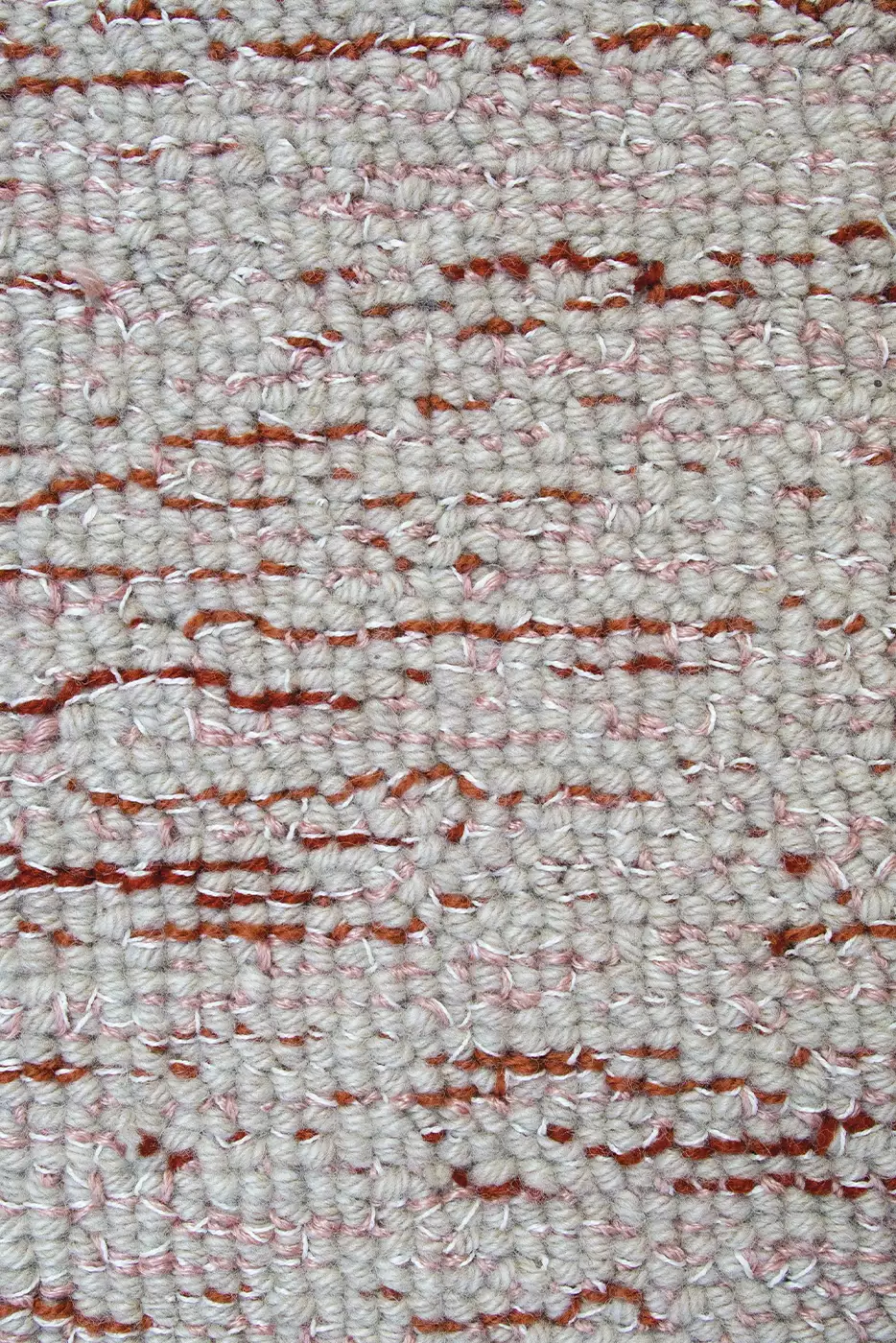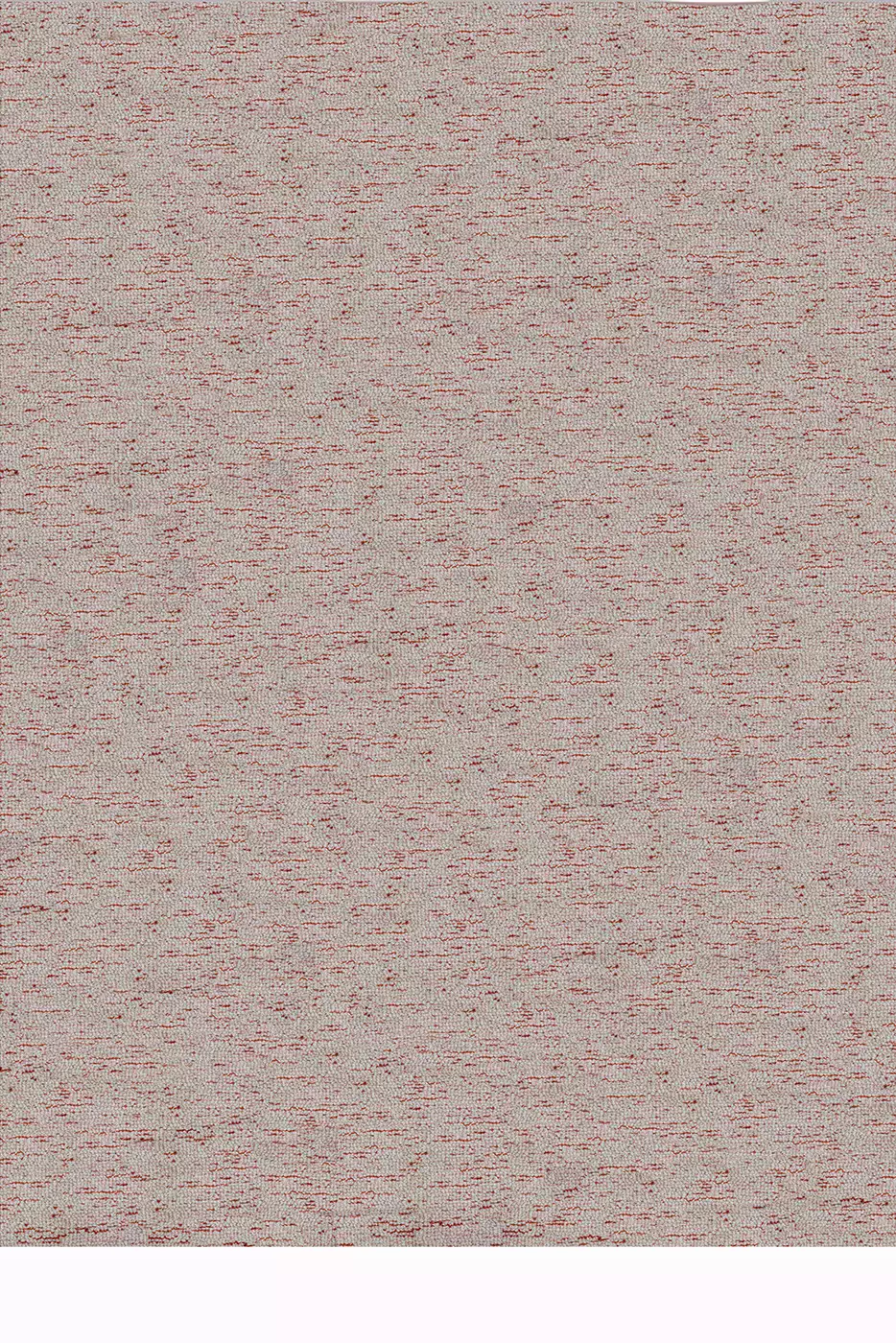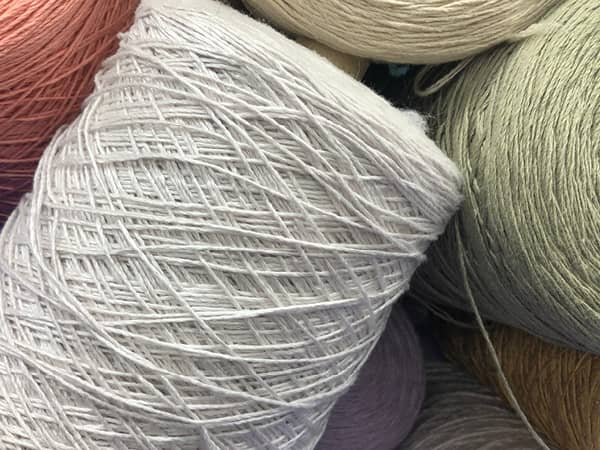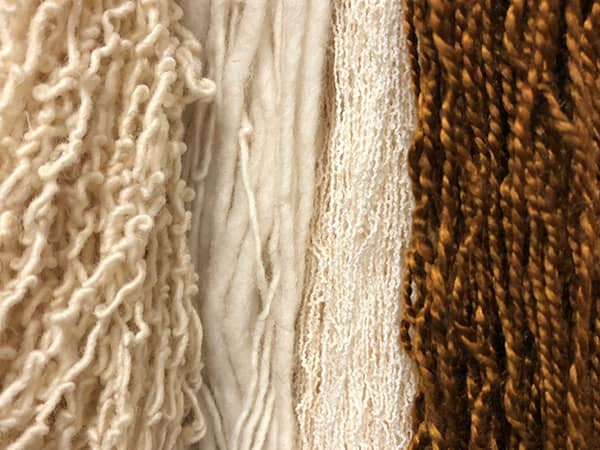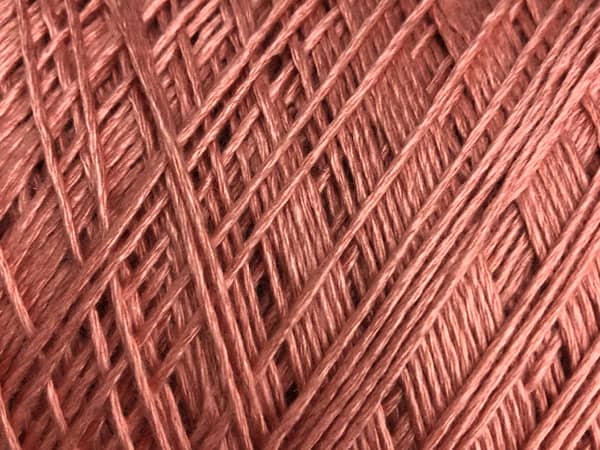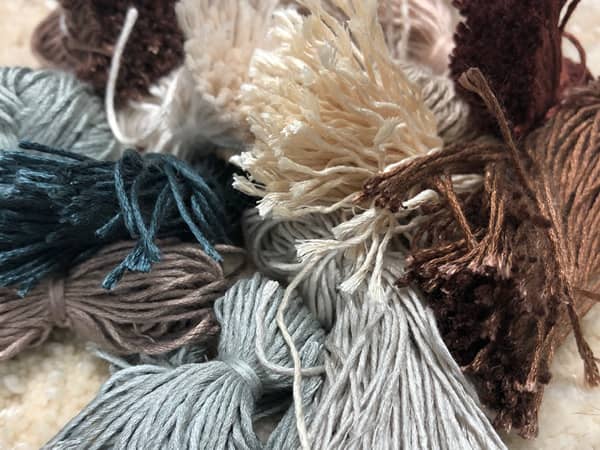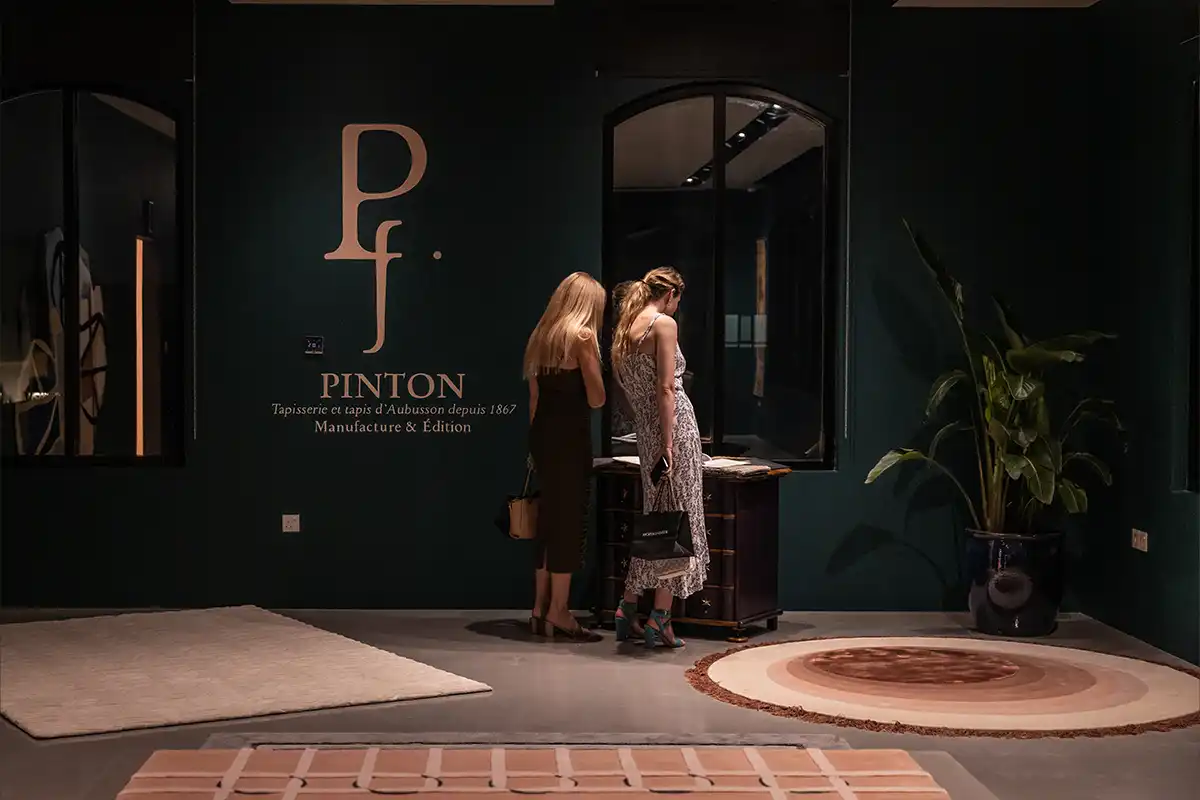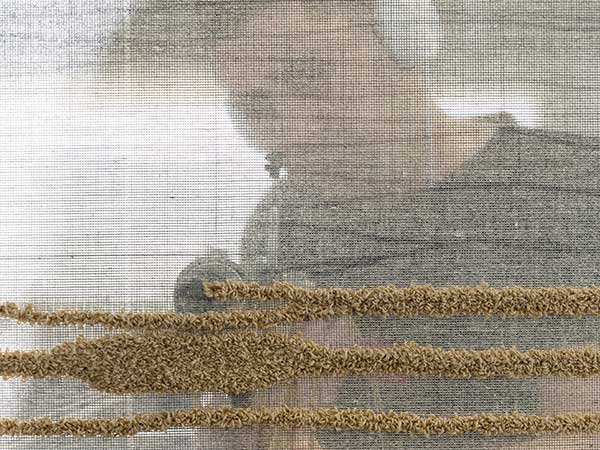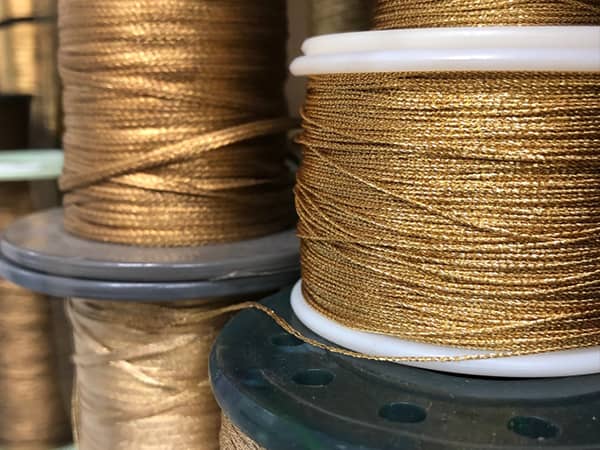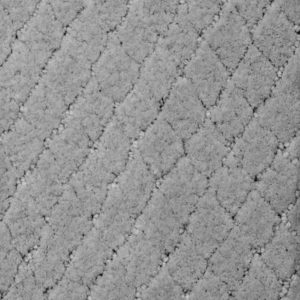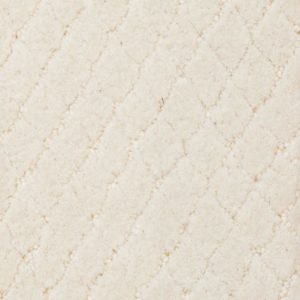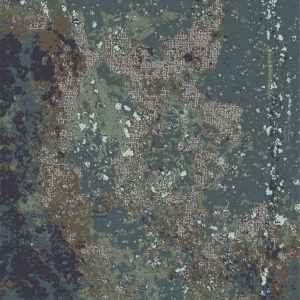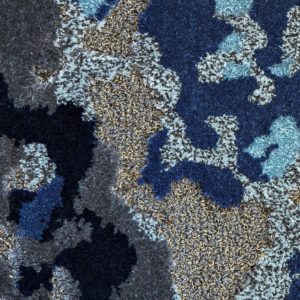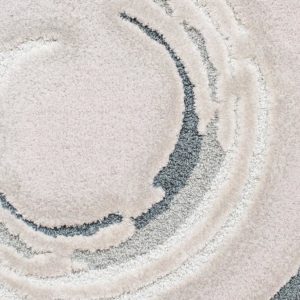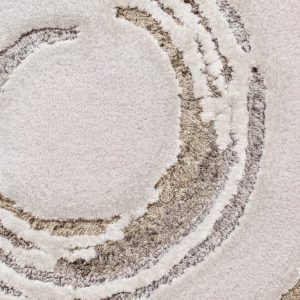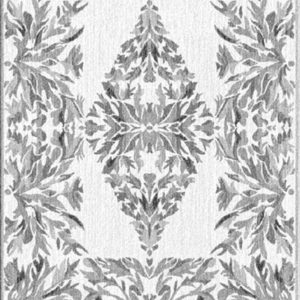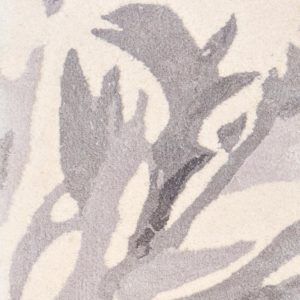marbre rose #3
1013,00€
by Pinton Studio Lab
ATLAS COLLECTION
MATERIALS Wool, Tencel, Baccara, silk, metallic threads & Linen
TECHNIQUE Tufté main
DIMENSIONS a choice
PRICE ON REQUEST. CONTACT US.描述
linen
Linen is a plant-based natural fibre derived from flax. It is possibly one of the first fibres used by man: fragments of twisted and dyed linen fibres were found, allegedly over 30,000 years old. In France, Charlemagne developed the culture of flax, which reached its peak in the XVIIIth century with over 300,000 hectares dedicated to its culture. A quintessential natural material, flax requires neither fertiliser nor irrigation. Transforming the flax plant into linen yarn involves no chemical process. Finally, the linen fibre stands the test of time and traffic. All these qualities led PINTON to offer rugs and carpets made in this material, used on its own or in combination with others.
Linen can be used in loop weave where the continuous thread forms loops on the surface of the rug, or in pile weave where the threads on the surface of the rug are cut. It can also be woven as loop and cut which combines both techniques.
wool
Wool is an animal fibre, most often derived from sheep fleece. Wool was already being spun as early as 5,000 BC. In Roman times, wool, leather and linen were the main materials used to make clothes. With the progressive development of mechanical processes and the evolution of breeding techniques, wool became the economic lung of several countries in the Xth century, and again in the XIIth. Renowned for its thermal and sound insulation properties, wool also offers the advantage of absorbing moisture. It is a noble and timeless material, used from time immemorial for its strength and durability. PINTON uses local wool with shorter carded fibres, which make it fluffier and give it more volume, or a specific type of wool from New-Zealand with long combed fibres that are more resistant to heavy traffic. Both types of wool are spun (carded or combed) and dyed in the spinning plant located in Felletin. Whether they are made in 100% pure virgin wool or blended with other materials like linen, silk, bamboo, leather or many others, PINTON wool rugs and carpets bring comfort and quality.
tencel
Tencel®, which is a registered trademark and another name for lyocell, is produced from wood pulp, usually eucalyptus. It emerged very recently in the textile industry: made for the first time at the end of the 1980s, it was marketed in 1992. Produced in Europe, this material is particularly innovative. Its production process is very quick since it takes only two hours from wood harvesting to spinning. Cultivating the timber necessary to its production is a particularly clean process: it needs very little water and no pesticides. This textile fibre is very soft to the touch, elastic, resistant and durable. It has excellent moisture absorption properties while remaining dry on the surface. Lyocell lends itself perfectly to blending with other materials and gives PINTON rugs a very smooth contemporary twist.
silk
Silk is a natural animal fibre derived from the cocoon spun by the caterpillar of the bombyx mori (worm of the mulberry tree), unsurprisingly called the “silkworm”. Invented in China in the IIIrd millennium before Christ, silk wasn’t produced in Europe, mainly in Italy, before the end of the Middle Ages. And it’s only under the reign of Henri IV that silk production developed in France with the planting of 4 million mulberry trees in the Ardèche, Dauphiné and Cévennes areas. Silk threads are very strong and quality weaving makes silk very resistant. It gives a particular shine to the woven pieces and combines easily with other materials such as wool or bamboo. In its Couture collection PINTON offers 100% silk rugs, incredibly soft. In tapestries silk is most often used in complement of one or more other materials like wool or even cotton.
hand tufted
The hand tufting technique is a process combining centuries-old skills and modern weaving tools. The canvas is perfectly stretched over an upright loom and the craftsperson transfers by hand the future design of the rug with the utmost precision. Threads are inserted manually, one by one, working with a gun on the back of the canvas, following the colours, the drawing and the different tuft heights. PINTON was one of the first manufactories to use the gun tufting technique to produce some of its rugs and carpets and is the only French workshop offering very high quality tufted rugs. With this technique, production times are reduced compared to the knotted stitch weave or point noué. Finally, hand tufting offers a large range of possible depths. Carving is the technique that consists in sculpting the wool and creating textures within the woven rug. Since the early 1990s, PINTON has been specialising in the production of hand tufted rugs for which it also collaborates with famous designers and artists.
metal threads
A few thousand years before Christ, Roman, Chinese, Persian and Egyptian craftsmen used to cover in gold leaf the threads that they were going to weave for the rich and powerful. Later, weavers used gold and silver threads to embellish tapestries woven out of wool or silk. These threads were difficult to work and extended production times. They required particular skills, passed from generation to generation. From the XVIIth century onward, new techniques made it possible to create very fine metal threads able to go through fabric. Today, the metals used with textile fibres are silver, gold and copper, but also aluminium, iron or stainless steel, and come in every colour. In PINTON’s Couture collection, these fabulous threads are inserted alongside traditional wool or silk yarns, to create poetic and graphic pieces imagined in partnership with contemporary artists and designers.

